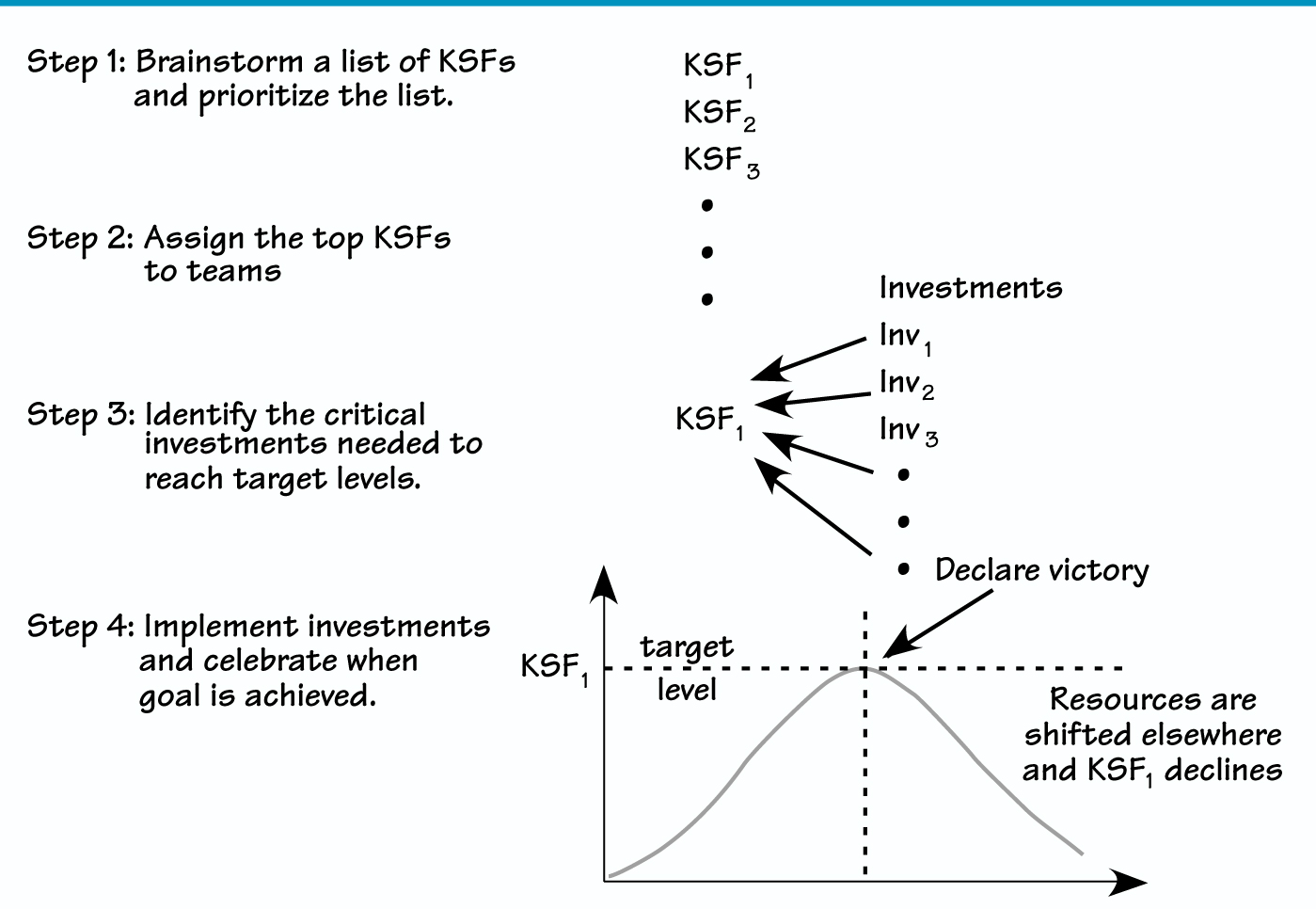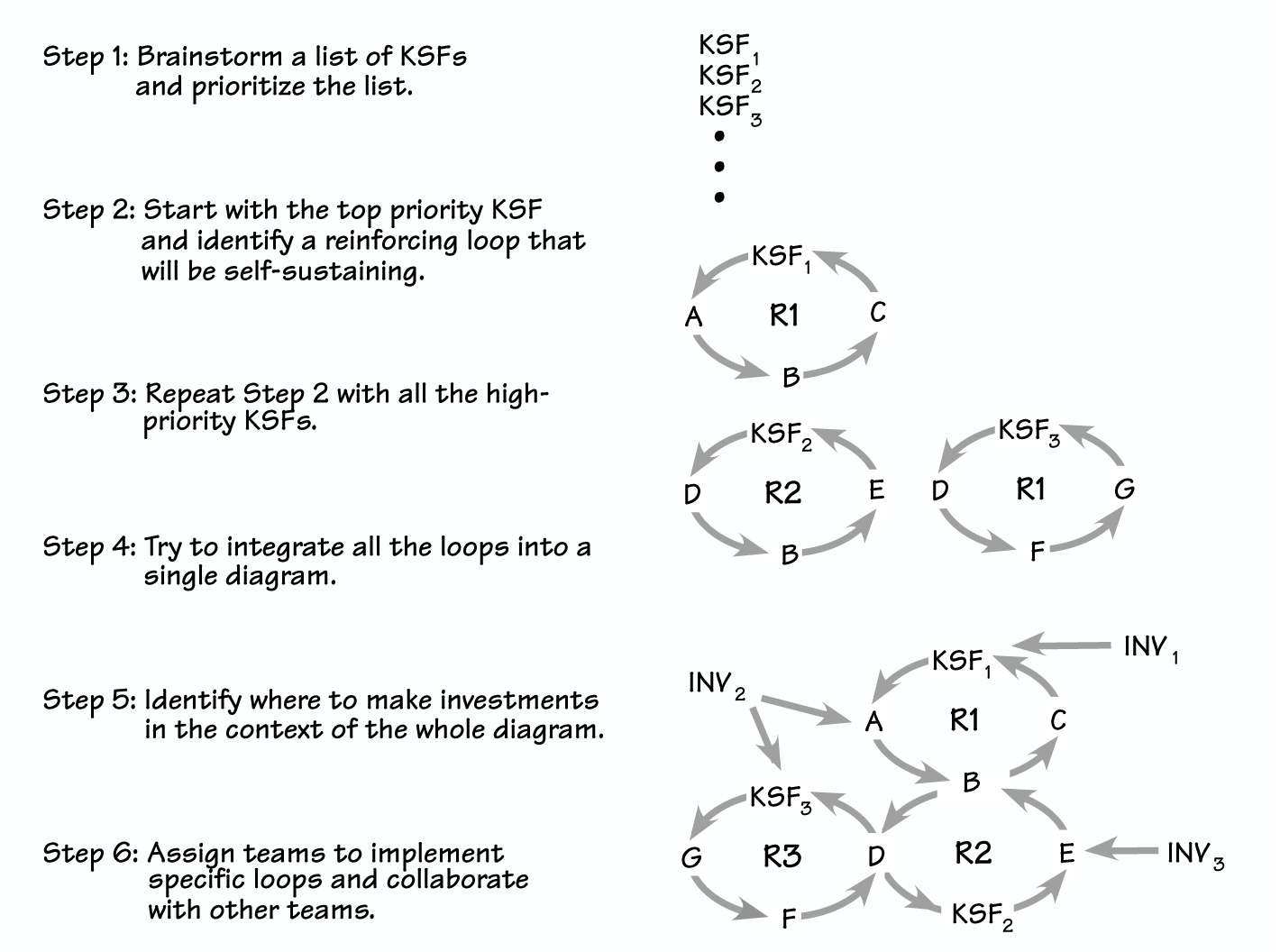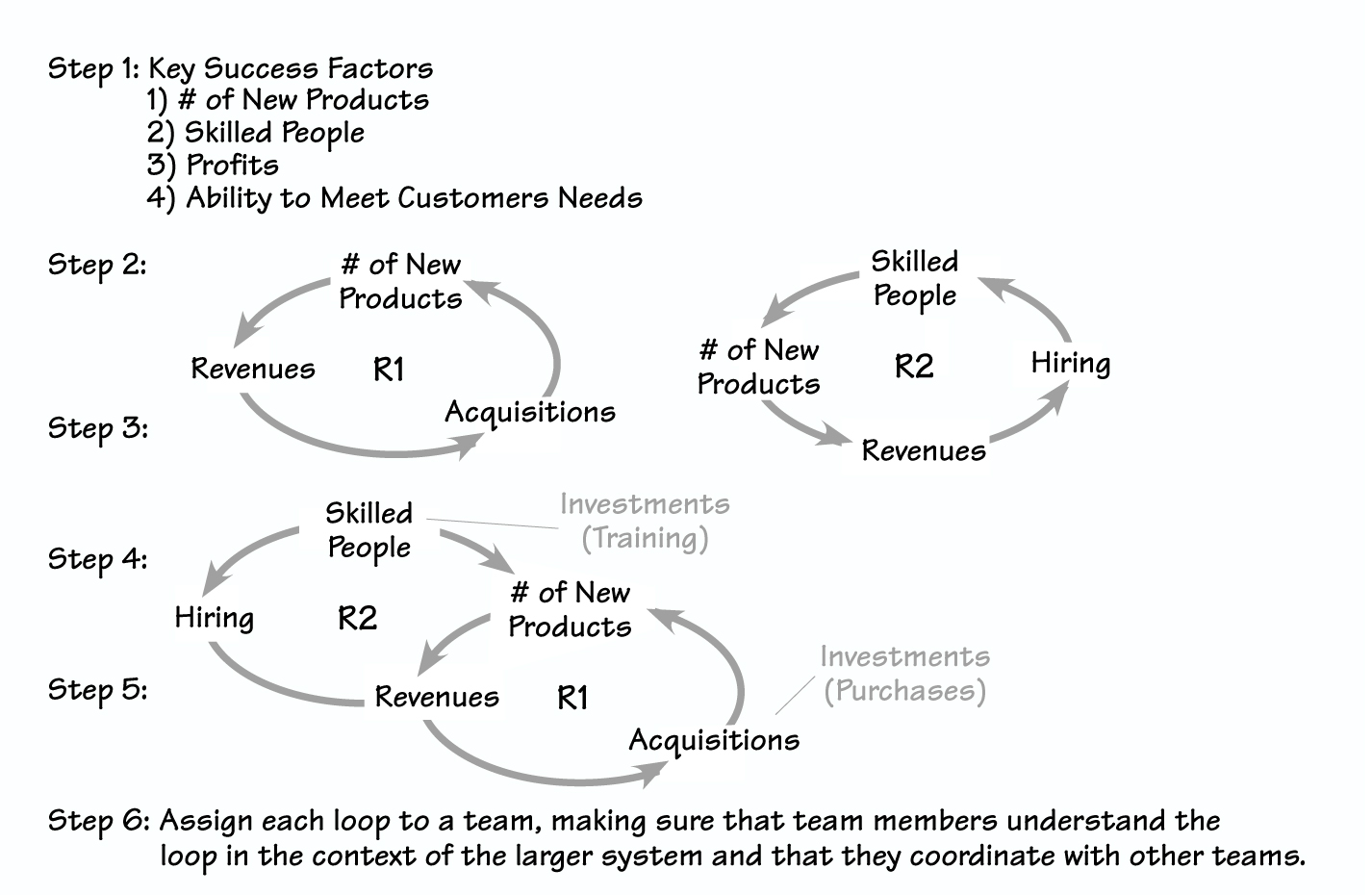Many of us are familiar with the following drill: Corporate pushes a new program, and each department must come up with its own plans for making the initiative a success. We start by brainstorming a list of Key Success Factors (KSFs) that are critical to implementing the new program (see “Traditional Key Success Factor Approach”).We then prioritize the KSFs and assign each to a team charged with bringing that KSF to a target level. Each team identifies a set of investments needed to reach the desired goal and then works toward meeting the objective. When the KSF hits the goal, the team declares victory and moves on to the next KSF on the list. Yet the larger program fails to achieve its overall goals.
The Paradox of KSFs
Most of us approach a large, complex issue by breaking it down into manageable parts. By focusing on a few aspects at a time, we sometimes succeed in improving the parts, but we often fail to address the problem as a whole. In the long run, this approach robs us of resources that we could have used to look at an issue from a systemic perspective.
TRADITIONAL KEY SUCCESS FACTOR APPROACH

We can find ample evidence of the limits to a factors approach in medical literature. In Sweden, for example, researchers tried to reduce cardiovascular risk factors in 3,490 business executives. After five years of intervention and 11 years of follow-up, the executives had reduced their risk factors by an average of 46 percent, yet they had a higher death rate than members of a control group. A similar study in the U.S. produced comparable results.
We might dismiss these studies as statistical flukes if the consequences weren’t so serious. The sad reality is that these results probably reflect many of our efforts, not just in healthcare but in virtually every facet of our organizations. Although we focus time and again on improving single factors, we fail to acknowledge that the health of most individuals—and most systems—is greatly determined by the relationships among critical loops. The line “the operation was successful, but the patient died” sums up the pitfalls of the factors approach to complex systems.
Beyond Factors to Loops
To create long-lasting success, we need to extend our factors approach and identify the interrelationships among the factors that drive the dynamics of the system—in short, to identify the Key Success Loops (KSLs).When we take a systemic approach, we realize that the lowest meaningful units of analysis are loops, not individual factors—and we no longer initiate actions on any factors until we distinguish the critical loop or loops involved.
Now, imagine being given the same charge as before from corporate (see “Key Success Loop Approach”). We begin in the same way, by brainstorming and then prioritizing KSFs (Step 1). But instead of leaping into action by assigning the factors to teams, we take each of the high-priority factors and identify at least one reinforcing loop that will make the factor self-sustaining without continued external investments (Steps 2 and 3). We integrate all of the loops into a single diagram, in which the individual loops are connected by the factors they have in common (for example, B and D in Step 4).We then look at the diagram as a whole and decide where to make the investments that would help support the success of the entire system (Step 5). Only after we have developed a sufficient understanding of the system will we assign teams to implement specific success loops. Each team then collaborate closely with those teams whose loops are directly connected to theirs (Step 6).
Launching a New Venture
Let’s walk through a simplified example of a Key Success Loop approach. Suppose we want to launch a new business venture in our organization (see “New Business Venture Success Loops”).We begin by brainstorming a list of KSFs that we believe are important to our success, such as number of new products, skilled people, profit, and ability to meet customer needs (Step 1).
We then focus on the first factor and try to identify a key loop that would make it self-reinforcing. We can ask either “What would an increase in the number of new products cause?” or “What would be an important driver of growth in the number of new products? ”The first question leads us downstream in the arrow flow to “Revenues,” while the second takes us in the upstream direction to “Acquisitions.” Either way, we try to create a reinforcing loop around the original factor (Step 2).We then repeat the process with the remaining factors (Step 3).
After we have created a loop for each KSF, we look for common variables in the individual loops. In this example, loops R1 and R2 can be linked through “Revenues” and “# of New Products” (Step 4). Once we have a diagram that maps the key linkages, we can begin to identify the best places to make high-leverage investments (Step 5). Now we are ready to assign teams to focus on each of the loops through a collaborative effort in which each team understands its loop in the context of the larger system (Step 6).
Benefits of KSLs
KEY SUCCESS LOOP APPROACH

NEW BUSINESS VENTURE SUCCESS LOOPS

Moving beyond Key Success Factors to Key Success Loops offers a number of advantages. First, because the loop approach links you to a broader set of variables, you reduce the risk of focusing on the wrong factors. Even if you initially pick the wrong factors, the process of mapping the loops increases the likelihood that you will include the most important ones. Also, identifying the loops decreases competition for limited resources. When everyone can see the interconnections, teams are less likely to “pump up” their own factors without regard for the effect on others. Loops can also provide a clearer picture of where investing in one point could positively affect multiple factors. Finally, rather than being stuck in the “Ready, Fire, Aim” syndrome that many organizations experience, emphasizing KSLs can actually give you a viable “Ready, Aim, Fire” approach.
Daniel H. Kim is a co-founder of Pegasus Communications, Inc., and publisher of The Systems Thinker.
